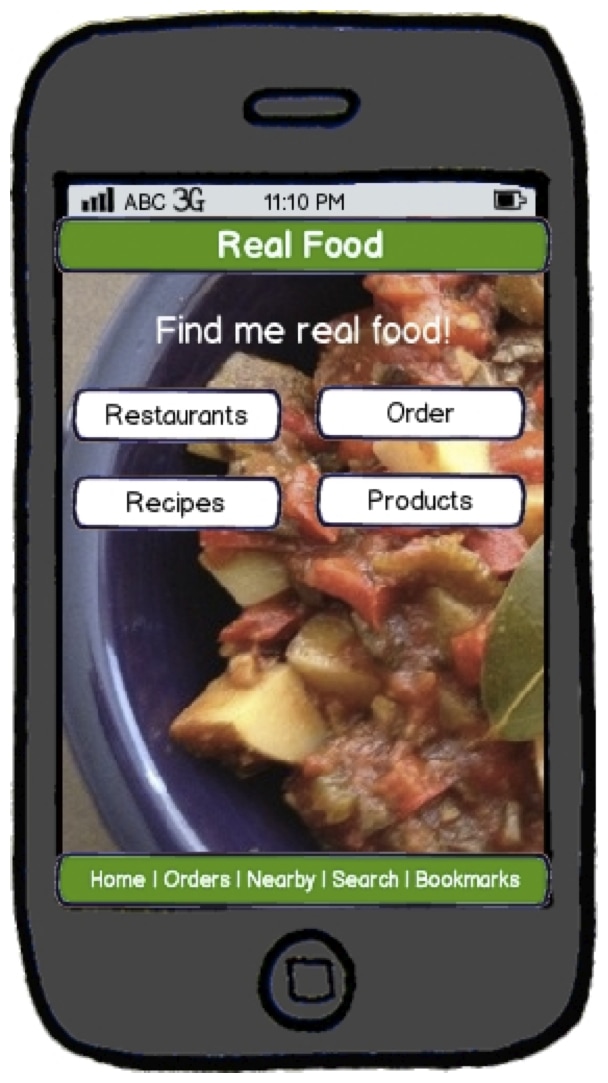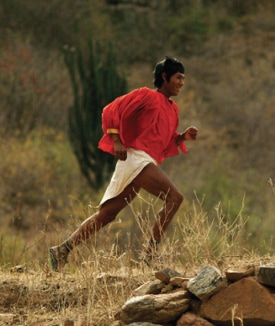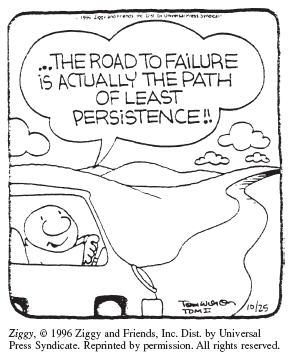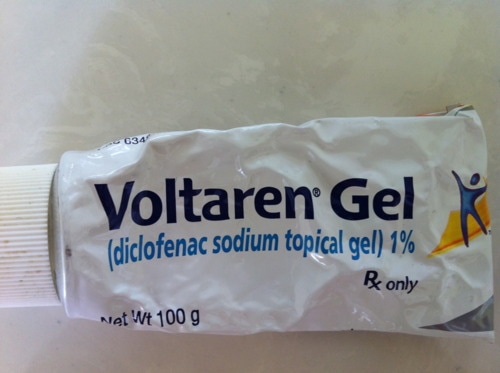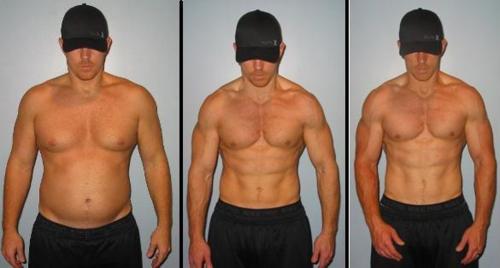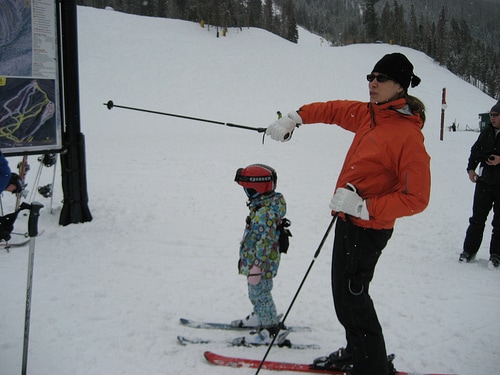Lucinda
|
|
I’ve founded a new company, this time all by my lonesome. Depending on how you count, this is at least my sixth startup:
The most common question I get after speaking at entrepreneurial events is always some version of “how do I start?” and the answer is “you just do,” which isn’t very useful for people. The only thing that seems useful is to give them examples. My plan is to tell the story of my next company as it unfolds, in the same way I documented my experience as an Eisenhower Fellow in a long series of posts on my old blog [Cereal CEO, which I'm copying into this new blog]. I hope that it’s useful to other entrepreneurs.
0 Comments
If I needed any more reason to get my name back:
http://bigthink.com/ideas/40387?page=1 Even after controlling for education levels and work hours, a woman who took her husband’s name earns less €960 compared to €1156. Probably because: Despite the fact that other than their name choice the women were identical, the participants overwhelmingly described the woman who had taken her husband’s name as being more caring, more dependent, less intelligent, more emotional and (somewhat) less competent. I just finished reason a really terrific book, Born To Run, by Christopher McDougall. An acquaintance suggested that I read it after I mentioned that I recently started and am loving barefoot trail running. I’m very grateful that she followed through and got the book to me. It’s a shaggy-dog story that leads through the crazy world of ultra marathons, the Sierra Madre and the Tarahumara, and the top distance coaches, biologists, and anthropologists. I ended up understanding why I am running with joy for the first time since I left childhood, and a little bit more about humans beings. (Photo of a Tarahumara running is McDougall’s) Turns out that persistence, and our natural ability to run long distances are both critical to our species success. (Yes, running is natural - but you’ll have to read the book or at least watch the video at the end of this post to get that story). Our ancestors hunted, and out-hunted our competitors, the Neanderthals, by running our prey into the ground. We ran long and easy, in teams. We chased an antelope until it literally dropped dead. All if which got me to thinking about start-ups.
I’ve been told - often - that I’m persistent to a fault. Many knowledgeable folks say that persistence is a key attribute of successful entrepreneurs, though I don’t claim to be any proof of that. How could I use my persistence as a strategic advantage? I’m not sure yet what I’m going to do next yet, but the lead contender today is a project I’m working on with a few great guys who are building a proof of concept that we will be ready to market in the fall. We figure that if we can sell it that’s proof that it’s a good idea and we’re off to the races. If not we won’t have lost much. The idea isn’t earth-shattering, but it would make life a ton easier for a lot of people. There are many reasons that we think it’s smart strategically. First, the solution is very simple in a field of the very complex; simplicity and elegance are attractive. Second, I like the model - it’s analogous to Salesforce.com in the early days, when salespeople expensed individual accounts because the tool was so much better than Siebel, which they were supposed to be using (this was before Salesforce became Siebel). Third, it’s fun to take on the big guy with something small. It’s a Kopppelman value-destroying idea. And there are a long list of others like the supporting trends, the teams’ experience and expertise, on and on. The truth is, though, that I was drawn to the opportunity primarily because I think that I’ve devised a way to start and grow it without outside capital. I’ve raised many rounds of venture capital, and I’ve worked with great (and horrible) investors. I’m ready to do it without them, I think. That has less to do with dilution than it does loss of control, and what I see as fundamental issues in the VC-entrepreneur model (I’ll post about that someday). What I realized, thinking about persistence in the start-up context, is that internally-financed growth is the business version of persistence. It’s a weapon. When you can run longer than your prey, you get to eat them for lunch. When you raise outside capital, get into the habit of burning cash for growth, you have to keep raising money to run. When you provide enough value that customers are happy to pay more than it costs you to produce that value, you can run forever. You’re free. Of course, there’s a trade-off: slower growth. There’s only so fast that an internally-financed company can grow. Look at the wacky counter-example, the fastest growing company in history, Groupon - it's hemorrhaging cash. But I’m not that motivated by high-flying growth any more. As I learned from McDougall, great running stems from joy. Yes, you have to train hard and smart, it can be extremely painful, sometimes you fall. But, regardless, the greatest runners run with joy. It’s a deep thing, it’s about being a better person. It’s about giving rather than getting. It might sound a bit wacky, but I believe that we can build a great company using those same principles. What I love about start-ups is the people - the team, the customers, the partners. I’m old now, and I don’t need any external affirmation. I can follow my slightly nutty ideas and not care what anyone but my team thinks of them. I just want to work with good people to build great things that customers find useful. As long as I’m doing that, I can do it forever. And everyone will be happy. p.s. Back to running, here’s a great video from Nature that tells the basic story in just 6 minutes. This is a special-topic post. Super-boring for anyone not interested in knee injuries or P90X. Sorry. I have bad knees. First of all, I’m knock-kneed (officially, genu valgum). I don’t much like the look of it, but more concerning is that it makes the supposedly straight hip-knee-ankle line more more of a triangle. It results in all sorts of problems, including chondromalacia patella - a softening of the cartilage under the patella. I made this a whole lot worse in my teenage quest to dunk. I did way too many squat presses with way too much weight, which overbuilt my quads, which pulled my kneecap up which meant that the cartilage on its underside rubbed on my femur every time I bent my knee. (I never did dunk a basketball, but I did get enough air to dunk a volleyball.) I had a special brace that was supposed to hold my kneecaps down, but they didn’t work very well. The result was that I had arthritis by the time I was in my mid-20s. Then, when I was 30, I ruptured my right ACL in a Shotokan Karate tournament. I had an ACL allograft to repair the knee. It turned out that I already had Grade IV chondromalacia (the worst), and that was “cleaned up” too. The cartilage should look like a hard boiled egg; mine looked like that fake crabmeat. I had the allograft because it was the most agressive option, supposedly it would get me back the fastest and fullest. Unfortunately, as strong as my new ACL has proven to be, I completely destroyed my patellar cartilage during rehab - all those knee-bending exercises that help build the muscles around the knee to support the new ligament just tore them up. So, three years later, back under the knife I went. This time, both knees were operated on and I was in a wheelchair for a month, then on crutches. As soon as I was out of the braces, I went back at it again, and had so much swelling and pain that I couldn’t work out for more than a day or two a week - with the support of too-frequent drainings (via a giant needle - horrid) and cortisone injections. Still not smart enough to shift approaches, I went on a tour of leading knee surgeons. “What can I do?” All three started off with “Well, you’re really too young for knee replacements.” One suggested that I consider osteotomy - my fibula would be sliced diagonally, realigned, and pinned in a geometry that would align my hips, knees, and ankles. That was enough to scare me off of all of it, and I gave up. I had been a hard-core 7-days-a-week competitive athlete from 13 to 30 and I turned into a couch potato. I couldn’t bike for more than an hour and walk the next day. I gave up backpacking. It was horrible. Finally, after my second daughter went to pre-school, I decided that I had to exercise for exercise’s sake. I had never done exercise in my life - I had done athletics - and it’s very very different. I decided that NordicTracking was the right thing - little knee bend, controlled motion, full-body, cardio. So I bought one for $50 on eBay and started doing it every morning. I had to ice daily for the first couple of months. Thankfully I got the full West Wing on DVD that Christmas and was so motivated to see the next episode that I quickly worked up to about 45 minutes a day. And I skied hard. That got me back in OK shape. But it was so boring. Then - drumroll please - on our annual Memorial Day camping trip, a friend told me about P90X. If you watch TV, which I don’t, you’ve probably seen the infomercials. I bought the DVDs, weights and a pull-up bar, and put in the first DVD. When I started I could barely do most of it. Jumps, deep knee bends, push-ups, pull-ups. You name it, I couldn’t do it. P90X is a very structured 90-day program. I made it through 45 days that first time and had major trouble with… my shoulder! I could barely move my arm, couldn’t raise it above shoulder level, and it hurt like crazy. It took 3 doctors to figure out that I have artritis in my clavicles (from all that shooting for all those years) which led me to compensate in odd ways which ended up in tendonitis in my bicep. UGH! I did nothing with that arm or shoulder for almost two months while it healed. Voltaren, which is essentially a topical version of Aleve, worked wonders for me to control the swelling from the arthritis. I still use it on my shoulder or even my knees when things start to flare up. I’ve also found glucosamine chondroitin very helpful, although I’m no controlled study, when I forget to take it for more than a few days my shoulder and knees remind me. Once I got past that roadblock, I started to see results. Miraculous results. You can find hundreds of before and after shots of people with newly ripped abs from P90X, and they are real - I know some of them. I don’t look quite that ripped, but my results are miraculous for me. I am almost pain-free. I can run five miles with no swelling. I can ski, three maybe even four days straight. I can do a deep knee bend - painlessly, even thought it makes an awful crunching sound. I can jump, cut, turn, and spin. I can bicycle. I can pick up a ball and shoot around without fearing that something terrible is going to happen. I’m hoping to start martial arts again this fall. Why did it work? I think that it’s:
Lessons learned: run from the knife, never say die, and just press play, every day! |
Categories
All
Archives
May 2021
Me
I blog in spurts, about all sorts of things. |
